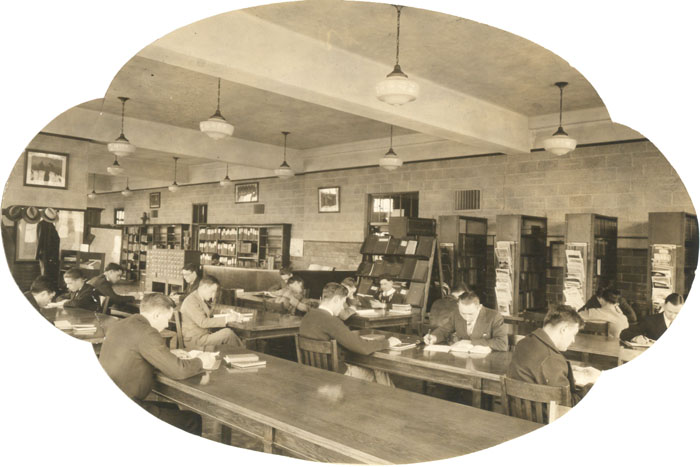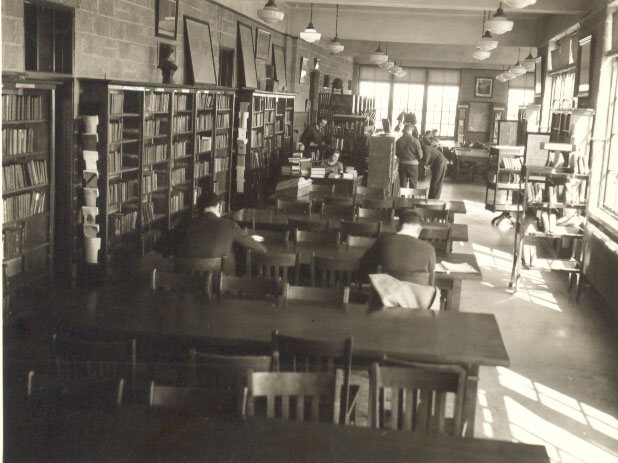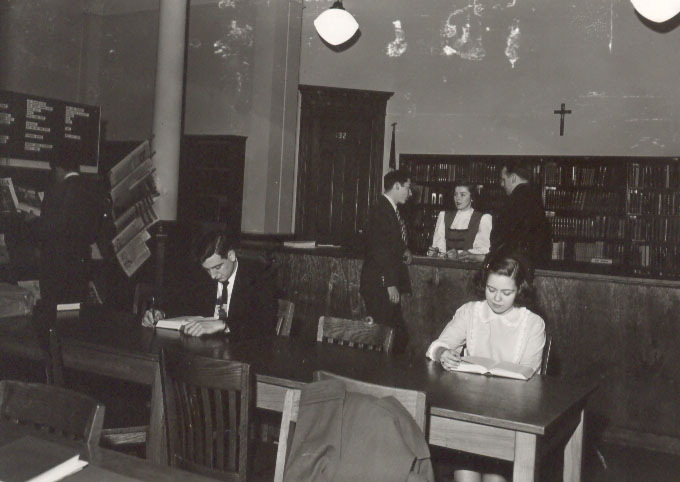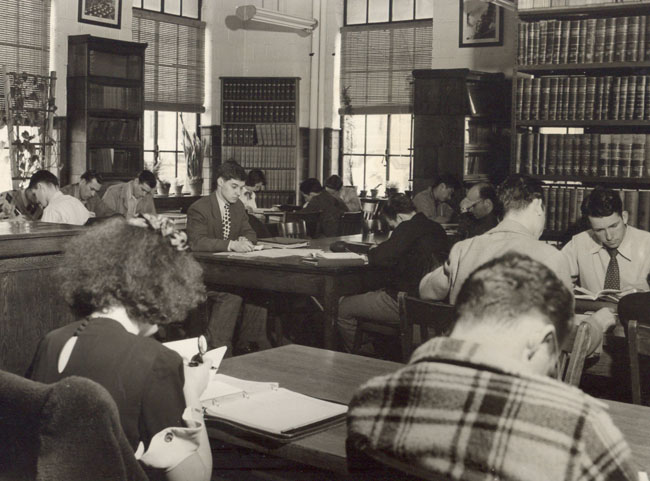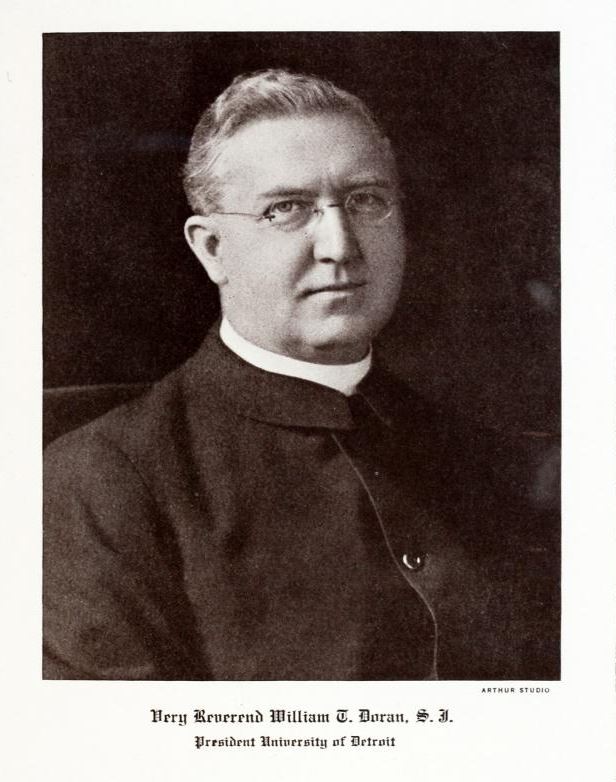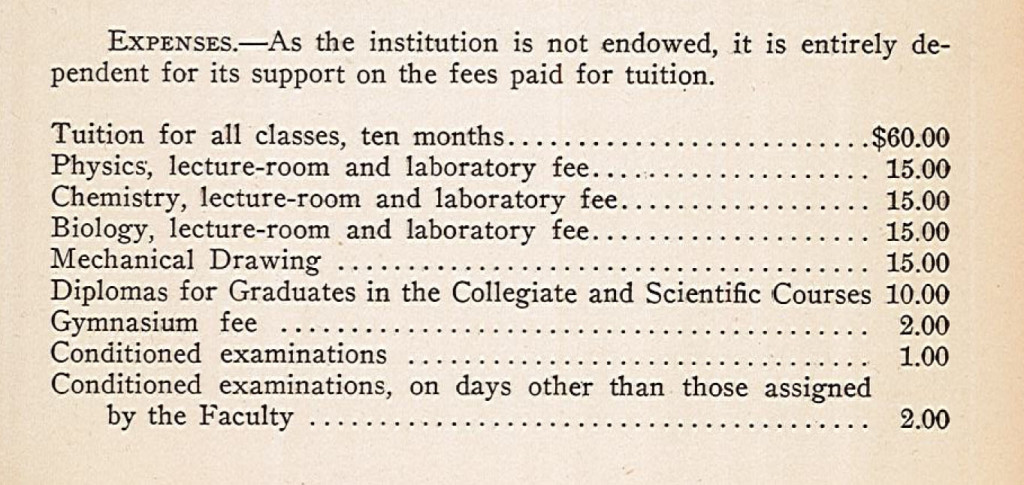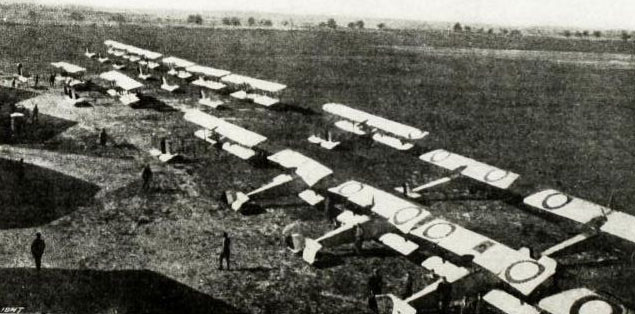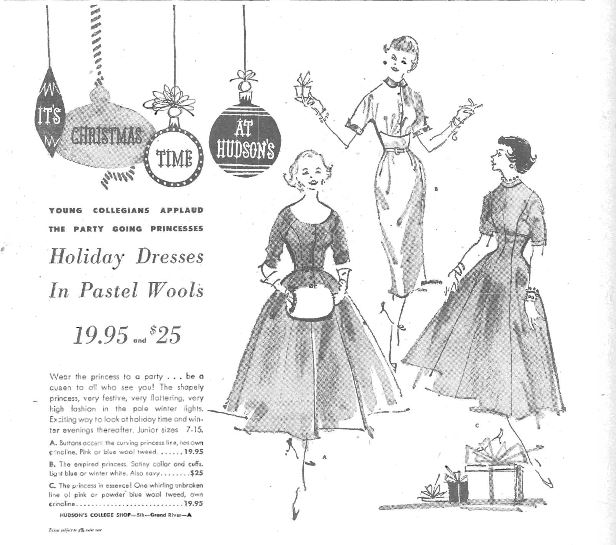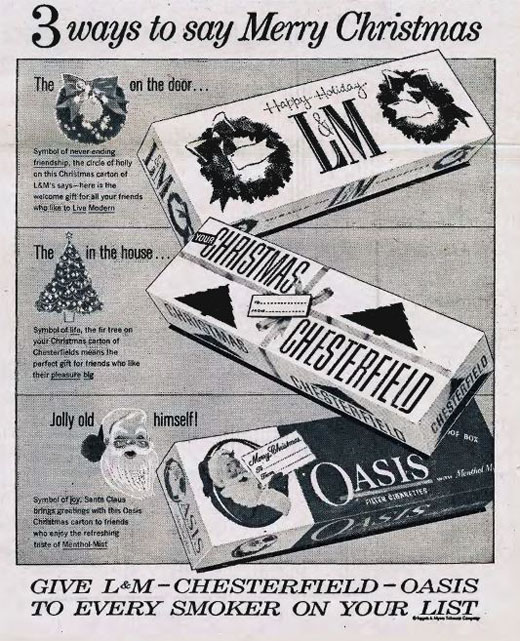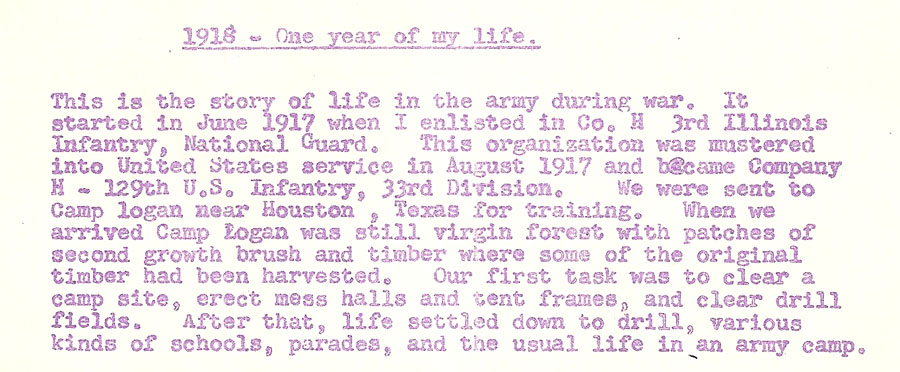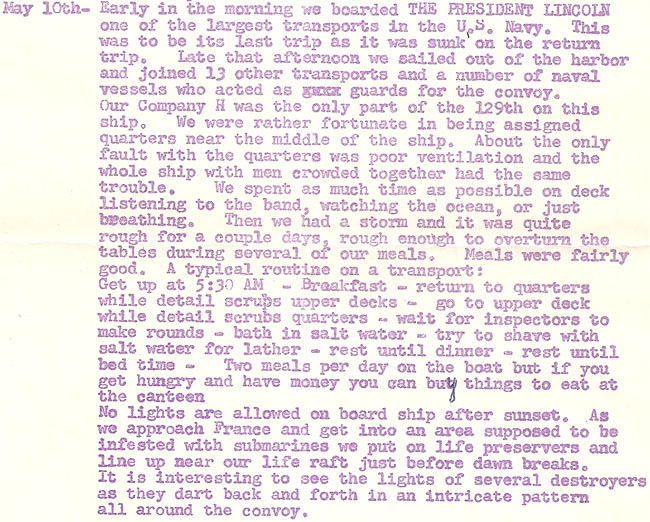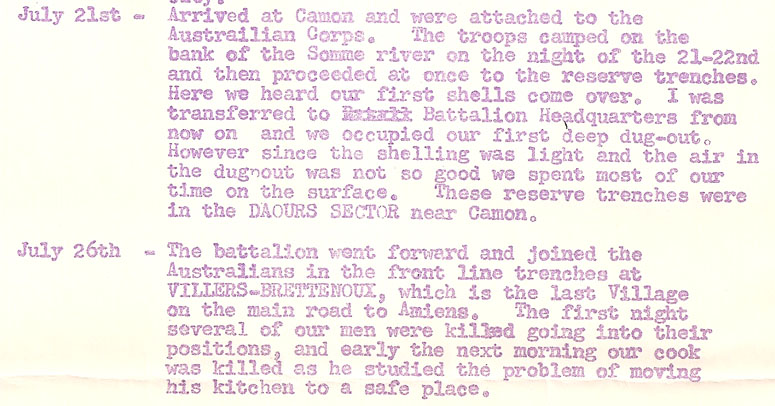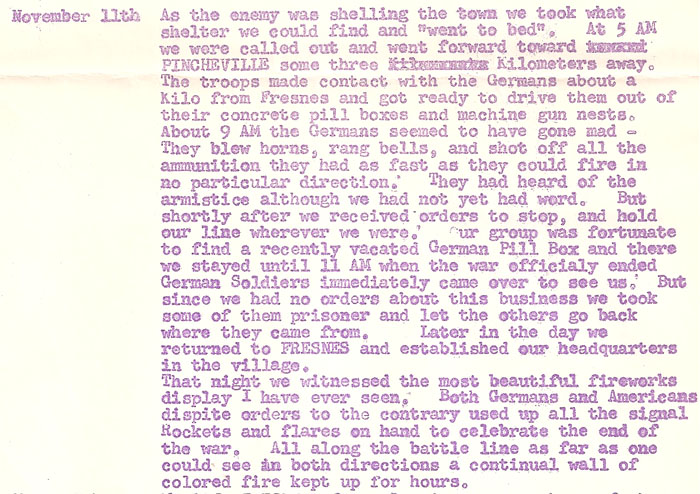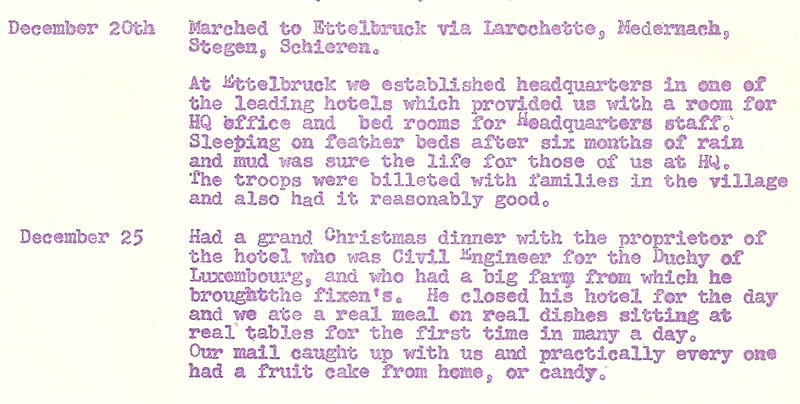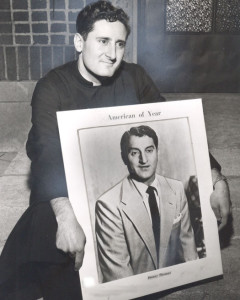 As part of the 1954 Spring Carnival, Danny Thomas was awarded “American of the Year” by the University of Detroit. Danny Thomas was born in Deerfield, Michigan, one of ten children of Lebanese immigrants (New York Times obituary). (Just as a side note with the current events about Syrian refugees: Wikipedia notes that according to the 1930 and 1920 census, his parents are listed as being born in Syria.) He was honored for his charity work entertaining the troops with a USO during the war, and since then had given an average of 115 benefit shows a year, but perhaps he was best known for founding and supporting St. Jude Hospital. Danny Thomas felt he owed his entire good fortune to St. Jude, the patron saint of the hopeless people.
As part of the 1954 Spring Carnival, Danny Thomas was awarded “American of the Year” by the University of Detroit. Danny Thomas was born in Deerfield, Michigan, one of ten children of Lebanese immigrants (New York Times obituary). (Just as a side note with the current events about Syrian refugees: Wikipedia notes that according to the 1930 and 1920 census, his parents are listed as being born in Syria.) He was honored for his charity work entertaining the troops with a USO during the war, and since then had given an average of 115 benefit shows a year, but perhaps he was best known for founding and supporting St. Jude Hospital. Danny Thomas felt he owed his entire good fortune to St. Jude, the patron saint of the hopeless people.
An article in the Varsity News explains his devotion to St. Jude: “In 1937 when his wife, Rosemarie was about to give birth to their first child; they lived in a rooming house in Detroit. Danny had just lost his job at a night club because the club closed for redecorating. He had only $7 in his pocket. He didn’t know how he was going to pay the hospital bill. He entered a nearby church, lit a candle to St. Jude and deposited the seven dollars in the poor box, asking St. Jude to return it to him ten-fold.
That night when he went back to his rooming house, the landlady told him he had a phone call from a local radio station. It was for a job to announce a commercial spot for Maytag washing machines. The job, Danny was told, would pay $75. Of course he took the job, and the money was a little more than ten times the amount he had given the church. It also paid the hospital bill for the birth of his first child.
Another direct result of Danny’s prayers to St. Jude came after he had become a $500 per week entertainer at Chicago’s 5100 Club. The owner of the club thought Danny was so valuable to its existence, that he offered the comedian a full half-interest. Danny didn’t know whether to take the offer and become a businessman or to try for greater heights as an entertainer.
In church the next morning he asked that he be shown some concrete sign of what to do, and asked that the answer be given him before midnight, he had to let the owner know what his intentions were.
That day, for the first time in many years, Chicago had one of it worst blizzards and by evening all trains were held up because of the snow and ice on the tracks. This delay caused an agency head, Abe Lastfogel of the William Morris office to be detained overnight in Chicago. (The) local William Morris representative suggested that Lastfogel go with him to the 5100 Club to see Danny Thomas whom he thought Lastfogel would be interested in handling.
When Danny met Lastfogel, he told the comedian that his place was in show business, and that he would send for him to come to Hollywood. This to Danny, was St. Jude’s response.”
The Arab American National Museum has an exhibit “An Enduring Legacy: Danny Thomas and ALSAC/St. Jude” through May 8, 2016.
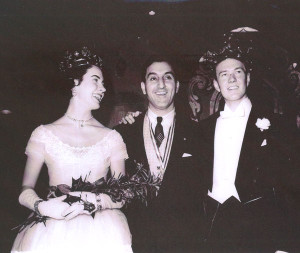
Danny Thomas with Carnival Queen Barbara Kennedy and Carnival King Edward McIntosh
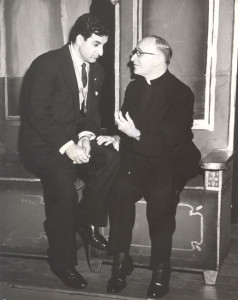
Danny Thomas with Fr. Celestin J. Steiner, S.J., UD President
